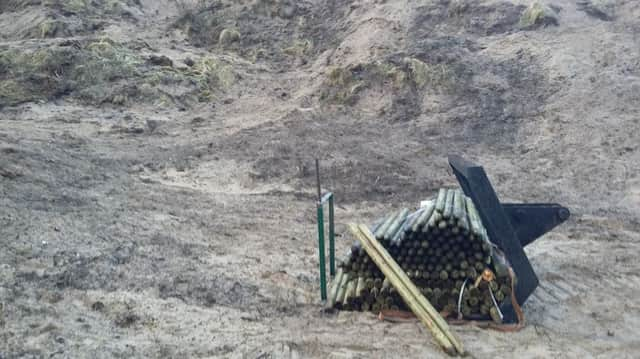No '˜kissing' goodbye to Game of Thrones site access


It follows work to extend fencing to facilitate animal grazing along a stretch of the famous coastal attraction. Alistair Bratten, who is a regular visitor to the location, captured on camera a range of photographs which he says illustrate people’s fears.
He stated: “They already have had for some years now an unsightly barbed wire fence in part of the dunes for 12 cattle which spend as they were today (March 2) outside the fence on the Bann Shore most of the time.
Advertisement
Hide AdAdvertisement
Hide Ad“They are now extending it way down the beach which will hinder walkers as nobody wants to walk near cattle or through cow dung. Part of the fence will pass through the site where the Game of Thrones was filmed.”


Barry Crawford, Area Ranger for the North Coast, said: “ Cattle grazing occurs for six months of the year (no grazing during period May to October inclusive), using up to 15 cows, there are no bulls on site..”Referring to the Game of Thrones film location, he continued: “ We are putting in place kissing gates (a type of gate which allows people to pass through, but not livestock) throughout the paddocks so visitors can continue to have access to the dune system. There is an interpretation panel at the entrance to the beach highlighting the strand’s role as a location for Game of Thrones, positioned so the maximum number of visitors will be able to see it.
“Grazing areas currently include the salt marsh, but by April grazing will be confined to sand dunes only. New paddock fencing means there will now be three paddocks to graze
Mr Bratten said his views are shared by other members of the public.
Advertisement
Hide AdAdvertisement
Hide Ad“Most morning dog walkers are upset about this. It will now have a barbed wire fence on almost two thirds of the dunes and although they have put in gates, nobody likes walking through a field full of cattle.”


Mr Barrett went on to query the impact on a natural habitat which, he said, has been used to tag and count migrating birds.
In response, the National Trust, one of a number of agencies involved in the Sand Dune conservation project, explained that conservation grazing is used to reduce rank grasses and light scrub in the dunes and to encourage the growth of native wild flowers, creating orchid and butterfly-rich meadows.
The Sand Dune conservation project is funded by the Northern Ireland Environment Agency to manage the wider Bann Estuary SAC/ASSI. It is supported by a range of stakeholders including Portstewart/Castlerock Golf Clubs; Causeway Coast and Glens Borough Council and the National Trust.
Advertisement
Hide AdAdvertisement
Hide AdMr Crawford added: “This ongoing project includes removing an invasive plant (sea buckthorn); protecting developing dunes with a low level post and rope along the edge of part of the strand; and the paddock grazing with cattle.
“New permanent signage, including an explanation of why we used cattle grazing and its benefits to wildlife will be in place by the start of May.”